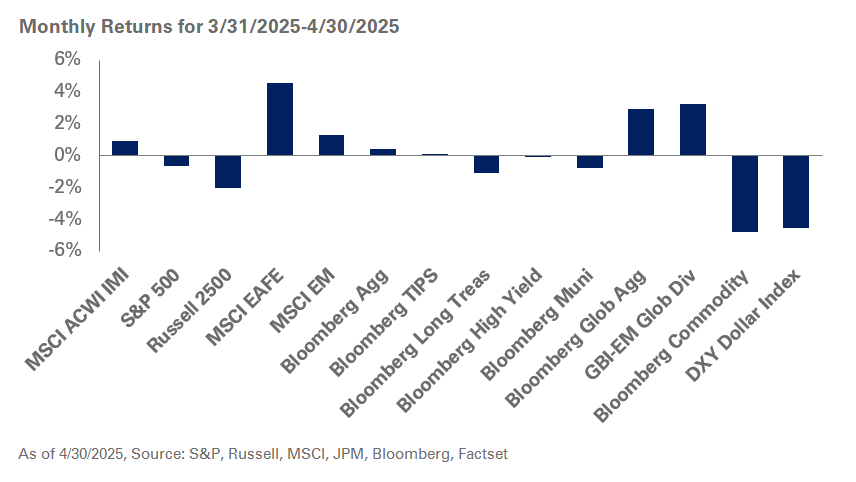Global Equities
U.S. stocks ended the first quarter on solid ground even as turmoil in the banking sector threw markets in disarray. Volatility spiked in March following the collapse of Silicon Valley Bank and a handful of other financial institutions. However, despite the instability, stocks rallied as regulators stepped in to contain the fallout and interest rates fell in response to the bank failures. For the three months ended March 31, the S&P 500 Index gained 7.5% and the NASDAQ was up 17%; during the same period, the Russell 2000 rose nearly 3% with small-cap equities lagging large-cap stocks. International developed equities were in the black too, with the MSCI EAFE up 8.5%. Emerging market stocks gained 4% in the first quarter despite a volatile geopolitical backdrop.
Meanwhile, within U.S. private equity, fundraising activity, at $66.8 billion, saw a modest uptick in the first quarter from $64.8 billion a year earlier, according to data from Preqin. Fundraising activity fell steeply in the U.S. venture market, totaling $11.7 billion in the first quarter compared to $73.8 billion a year ago.
New deal activity, at $261 billion, according to data from PitchBook, remained robust for U.S. private equity, although exits were few. On the venture side, deal activity totaled $37 billion of value in the first quarter, down 55% from a year ago and a record low since 2019. Exit activity slowed even more, totaling $56 billion for U.S. private equity in the first quarter, down 34% from the first quarter in 2022; exit value for venture was a mere $6 billion, an 82% drop from a year ago.
Global Fixed Income
In efforts to contain the fallout from the banking sector, including the failure of Silicon Valley Bank and the hurried rescue of Credit Suisse, the Federal Reserve raised the benchmark rate just 25 basis points in March to a target range of 4.75% to 5%. In addition, the central bank acted swiftly to reassure investors, opening the new Bank Term Funding Program to provide liquidity to financial institutions. As a result, the Fed’s balance sheet, which had declined for nearly a year, grew by $350 billion in March.
Although rates repriced down, spreads in investment-grade and high-yield credit remained steady, and fixed-income asset classes were in the black. Treasuries were up 3%, and investment-grade and high-yield corporate credit gained 3.5% and 3.6%, respectively. Credit hedge funds rose a modest 1.5%, according to the HFRI Credit Index.
Real Assets
The first quarter was a mixed bag for real assets. The Bloomberg Commodity Index lost 5.4%. Crude oil was down 5.6% for the three months ended March 31. During this period, gold was a bright spot with gains of 8%.
For global natural resource equities, 2023 was off to a muted start with returns of 0.6% for the first quarter. Meanwhile, the S&P Global Infrastructure Index got off to a better start, returning 3.9% for the first quarter. NEPC is constructive on infrastructure as a potential hedge against inflation and we continue to favor private markets when it comes to implementing infrastructure in a portfolio.
Elsewhere, in real estate, the FTSE NAREIT Equity REITs Index posted a modest 1.6% return for the quarter. The office market—everyone’s favorite punching bag since the pandemic—was at the receiving end again, with the Office sub-index down over 15%. The best performing subsector within REITs has been the growing self-storage asset class, which was up over 13% in the first quarter; industrial REITs maintained their multi-year surge, posting a return of nearly 10%.
Private real estate returns declined for the second straight quarter, with the NCREIF ODCE posting a 3.16% preliminary gross loss for the quarter as the effects of rising interest rates continue to pressure asset values. Fundamentals remain healthy for most sectors, though uncertainties around the future demand for traditional office space are weighing on markets.
Elsewhere, private infrastructure strategies—particularly communications infrastructure, renewable energy, and energy transition strategies—are still seeing increased interest from investors.



